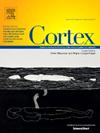Emotional distractors modulate event-related potentials even at very low contrast levels
IF 3.2
2区 心理学
Q1 BEHAVIORAL SCIENCES
引用次数: 0
Abstract
Emotional visual stimuli, whether appealing or aversive, preferentially capture exogenous attention due to their evolutionary significance. This study assessed whether such capacity persists at low contrast levels, where stimuli are minimally perceived. To this end, we recorded behavioral and electrophysiological (event-related potentials, ERPs) indices of attentional capture from 38 participants who were exposed to negative, neutral, and positive scenes, each presented at four distinct contrast levels. These contrast levels had previously resulted in a correct recognition rate of 49%, 52%, 58%, and 66% (chance = 50%) in a previous sample of 144 participants. Participants were presented with these scenes as distractors while simultaneously performing a perceptual task involving line orientation discrimination. ERP results revealed an emotional effect persistent across all contrast levels. Specifically, occipito-parietal P1 (88–119 msec) was larger for negative than for positive distractors, more intensely for the lowest contrast, while in a broadly spatially distributed N2 component, positive distractors elicited larger amplitudes relative to both negative (213–354 msec) and neutral (213–525 msec) images. While emotional valence did not influence behavioural measures, overall performance deteriorated as contrast increased. These findings suggest stimuli captured exogenous attention, and reinforce the advantage of emotional distractors in accessing neural processing automatically and highlight the existence of a temporal negativity bias. Importantly, our novel findings emphasize the robustness of this pattern, present even under limited perceptual conditions.
情绪干扰物即使在非常低的对比水平下也能调节事件相关电位
情感视觉刺激,无论是吸引人的还是厌恶的,由于其进化意义,优先捕获外源性注意。这项研究评估了这种能力是否在低对比度水平下持续存在,在低对比度水平下,刺激被感知的程度最低。为此,我们记录了38名参与者的行为和电生理(事件相关电位,ERPs)注意捕获指数,他们分别暴露在消极、中性和积极的场景中,每个场景都呈现在四个不同的对比水平上。在之前144名参与者的样本中,这些对比水平先前导致了49%,52%,58%和66%(机会= 50%)的正确识别率。参与者被呈现这些场景作为干扰,同时执行涉及线方向辨别的感知任务。ERP结果显示,情绪影响在所有对比水平上都持续存在。具体而言,负性干扰物的枕顶P1 (88-119 msec)比正性干扰物更大,在最低对比度下更强烈,而在广泛空间分布的N2分量中,正性干扰物相对于负性(213-354 msec)和中性(213-525 msec)图像都诱发了更大的振幅。虽然情绪效价不影响行为测量,但整体表现随着对比的增加而恶化。这些发现表明,刺激捕获了外源性注意力,并强化了情绪干扰物在自动进入神经处理方面的优势,并突出了时间负性偏见的存在。重要的是,我们的新发现强调了这种模式的稳健性,即使在有限的感知条件下也存在。
本文章由计算机程序翻译,如有差异,请以英文原文为准。
求助全文
约1分钟内获得全文
求助全文
来源期刊

Cortex
医学-行为科学
CiteScore
7.00
自引率
5.60%
发文量
250
审稿时长
74 days
期刊介绍:
CORTEX is an international journal devoted to the study of cognition and of the relationship between the nervous system and mental processes, particularly as these are reflected in the behaviour of patients with acquired brain lesions, normal volunteers, children with typical and atypical development, and in the activation of brain regions and systems as recorded by functional neuroimaging techniques. It was founded in 1964 by Ennio De Renzi.
 求助内容:
求助内容: 应助结果提醒方式:
应助结果提醒方式:


